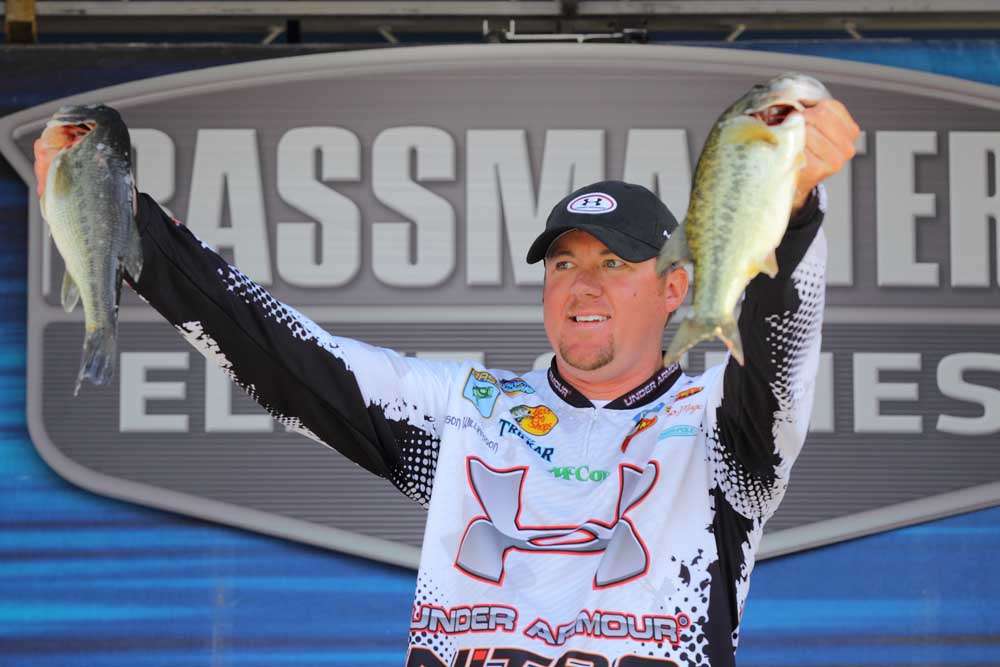
Q: HOW DO YOU SELECT A JIG TRAILER?
If you're not looking at them very closely, jigs can look alike. To the casual angler, the difference may just be size and color, even though head design, hook type and weight are all essential elements in choosing the right jig for the job.
The jig or something like it is probably one of the oldest lure types ever used to catch a bass. They're simple, but they're versatile and adaptable. That's what I love about the jig. Depending on how and where you fish it, you can probably catch bass on a jig on just about every body of water every day of the year.
One way I make my jig fishing more adaptable and versatile is by how I choose the trailers. There's a lot to it, but it's also pretty straightforward and basic when you break it down. Here's how I go about selecting the right jig trailer for the job.
Depth
The first thing I consider is the depth I'm fishing. There are exceptions to just about everything, but generally when I'm fishing shallow I like to use a chunk-style trailer. My favorite is the Zoom Chunk or Super Chunk. They look a lot like the old pork frogs that were so popular before we had so many soft plastic options.
A chunk-style trailer doesn't have a lot of action, but it works really well when you're flippin', pitching or casting a jig.
There's an important exception to my depth rule for trailer selection, and that's when I'm swimming a jig — which I mostly do in shallow water. If I'm swimming a jig or fishing a football head jig in deep water, I like a twin-tail trailer like the Zoom Fat Albert Twin Tail Grub. It has lots of action, even at slow speeds, and it really looks alive.
Water Clarity
Few considerations are more important than water clarity when you're bass fishing, and that's also true when you're choosing a jig trailer. My general rule is this: the dirtier the water, the bigger the trailer I use.
The reason is simple. In dirty water bass will rely more heavily on senses other than sight to find and target their prey. Their lateral line detects movement in the water around them and helps them zero-in on baitfish, crawfish or anything else they might eat, and a bigger trailer — especially a big twin-tail like the Fat Albert or a creature bait like the Zoom Brush Hog — moves a lot of water and helps them find my bait.
The more bass find my bait, the more bass will eat it.
If the water's pretty clear, not only will I change to lighter line and make longer casts, but I'll also scale down my jig trailer. The better the fish can see a bait, the less I want them to be able to find something "wrong" with it, and that means using a smaller lure.
I also like smaller trailers when fishing for smallmouth or spotted bass and bigger trailers when I'm somewhere that has a lot of big largemouth like Falcon or Amistad in Texas. Sometimes it takes a big bait to attract a big fish.
Color
My color selection for jig trailers ties in really closely with water clarity. If the water's dirty, I like bright or dark colors that show up well or offer a good silhouette so the bass can find them more easily. If the water's clear, I like natural colors like green pumpkin or watermelon that blend in with the surroundings.
That rule of thumb for color selection — dark in dirty water and natural in clear water — will serve you well just about anywhere bass are found, but occasionally you'll find a lake or a part of the country where some oddball color just slays 'em. When you do, by all mean use it. "Local" colors are successful for a reason, and you'll never catch me in Florida without junebug or on a spotted bass lake without watermelon. They just work!





